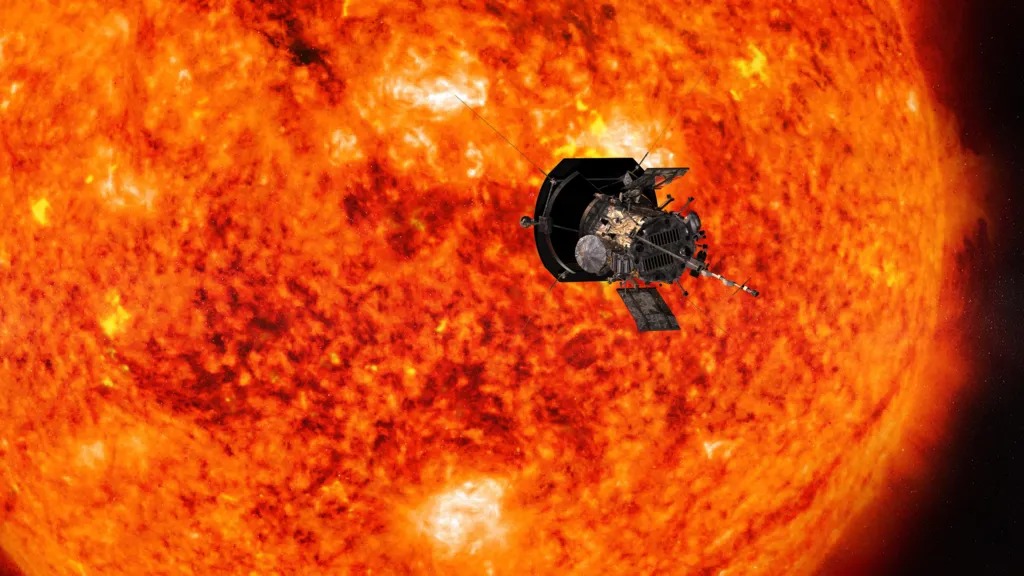
Parker Solar Probe: Humanity’s Closest Encounter with the Sun
NASA’s Parker Solar Probe is set to make history by venturing closer to the Sun than any spacecraft before. This daring mission aims to uncover mysteries of the Sun’s outer atmosphere, the corona, and improve our understanding of solar winds and their impact on Earth.
Launched in 2018, the probe has already completed 21 fly-bys, but its Christmas Eve fly-by will set a new record. At just 3.8 million miles (6.2 million km) from the Sun’s surface, the probe is approaching unprecedented proximity.
Why the Parker Solar Probe Mission Matters
The Sun’s corona, a super-heated outer atmosphere, reaches temperatures of millions of degrees, despite being farther from the Sun’s surface, which is about 6,000°C. This anomaly has baffled scientists for decades.
Dr. Jenifer Millard, an astronomer at Fifth Star Labs, explains:
“The corona is really, really hot, and we have no idea why… How is that atmosphere getting hotter?”
Understanding the corona could also demystify solar winds—charged particles bursting from the Sun. These particles cause phenomena like auroras but can also disrupt power grids, electronics, and communication systems, highlighting the significance of space weather research.
Engineering Marvels and Record Speeds
The probe’s mission involves navigating extreme conditions:
- Temperatures: Reaching 1,400°C, protected by an 11.5cm carbon-composite shield.
- Radiation: Intense exposure that requires advanced shielding to protect onboard electronics.
- Speed: Traveling at 430,000mph, faster than any human-made object, equivalent to flying from London to New York in under 30 seconds.
NASA’s Nicola Fox describes the scale:
“If I put the Sun and Earth one metre apart, Parker Solar Probe is just four centimetres from the Sun—that’s close.”
The Wait for Confirmation
During the approach, the spacecraft will lose contact with Earth for several days. Scientists anticipate a signal at 05:00 GMT on 28 December to confirm if the probe has survived its perilous journey.
Dr. Nicola Fox notes the team’s anxiety:
“As soon as a signal is beamed back, the team will text me a green heart to let me know the probe is OK.”
Despite the risks, Fox remains confident in the spacecraft’s resilience:
“We really have designed it to withstand these brutal conditions. It’s a tough little spacecraft.”
The Legacy of the Parker Solar Probe
This mission is not just about breaking records. Its findings will enhance our understanding of the Sun’s behavior, offering insights into solar winds and their impact on Earth. If successful, the probe will continue to orbit the Sun, contributing to solar science for years to come.
External Link: Learn more about the Parker Solar Probe at BBC News.
Internal Link: Explore more on space exploration and technology at Kenkou Land.





